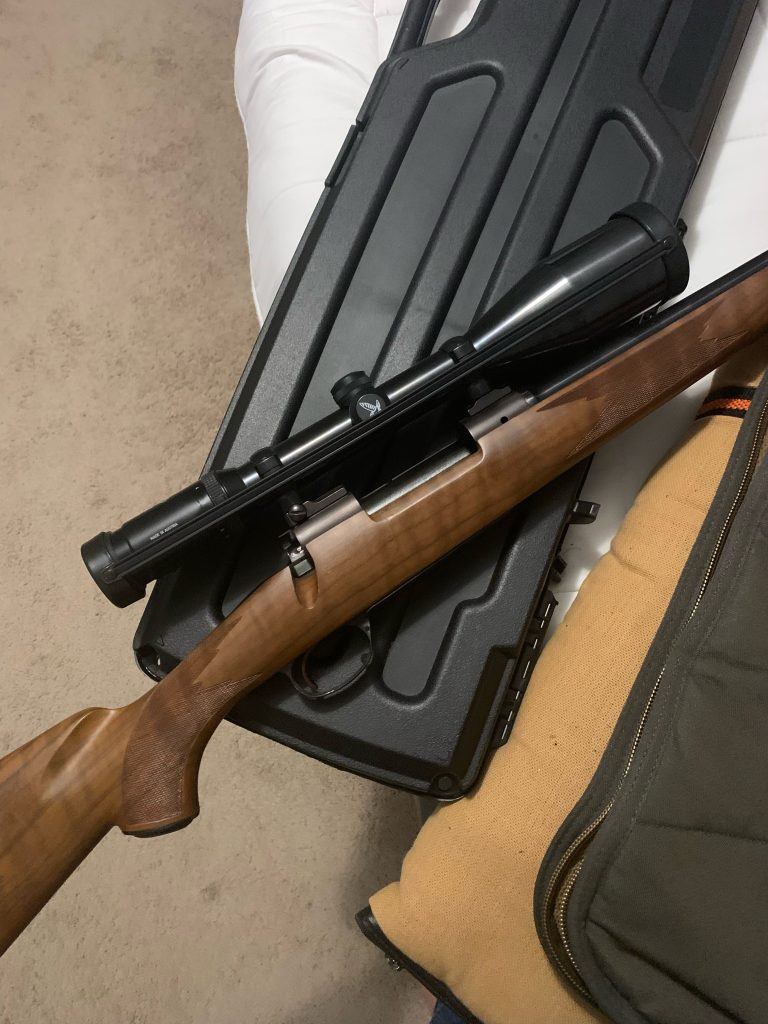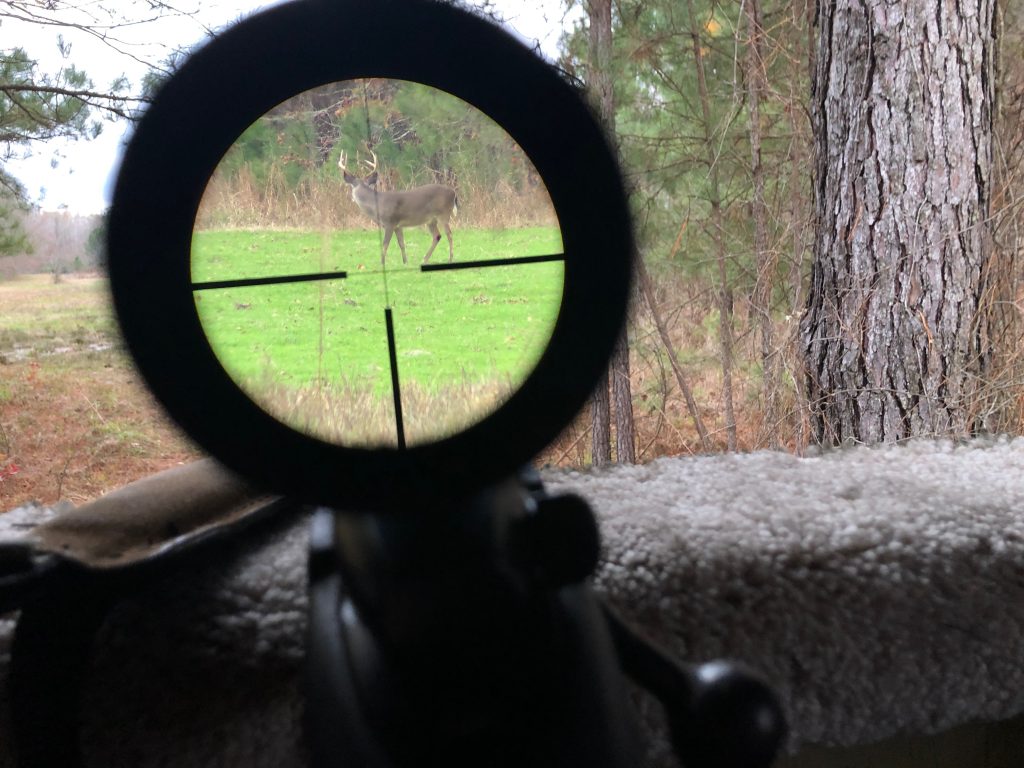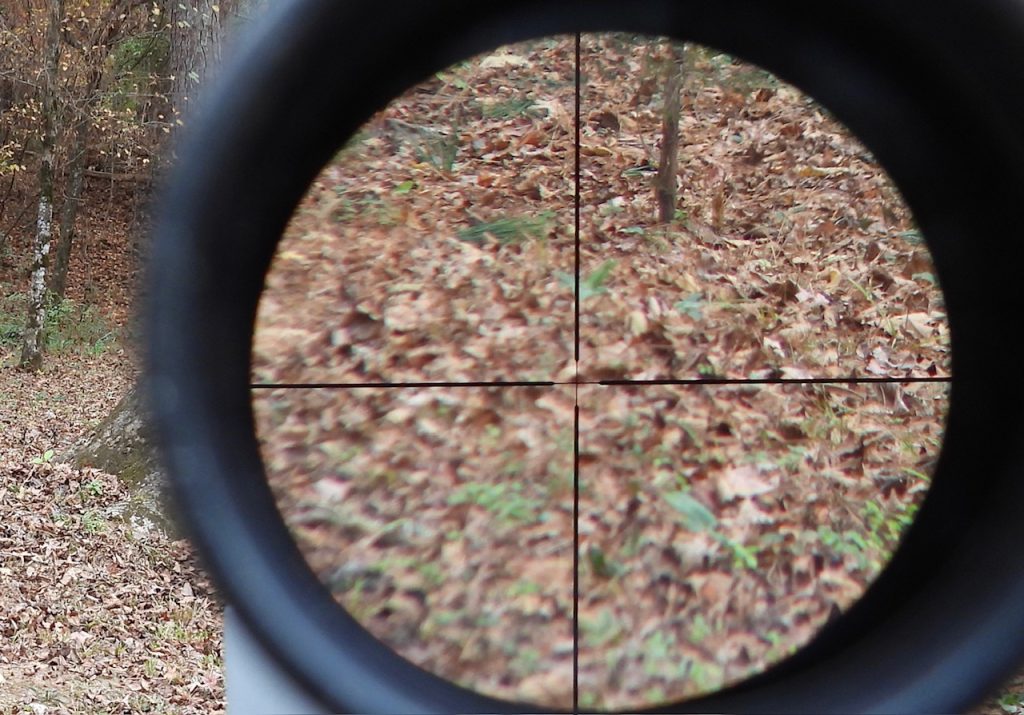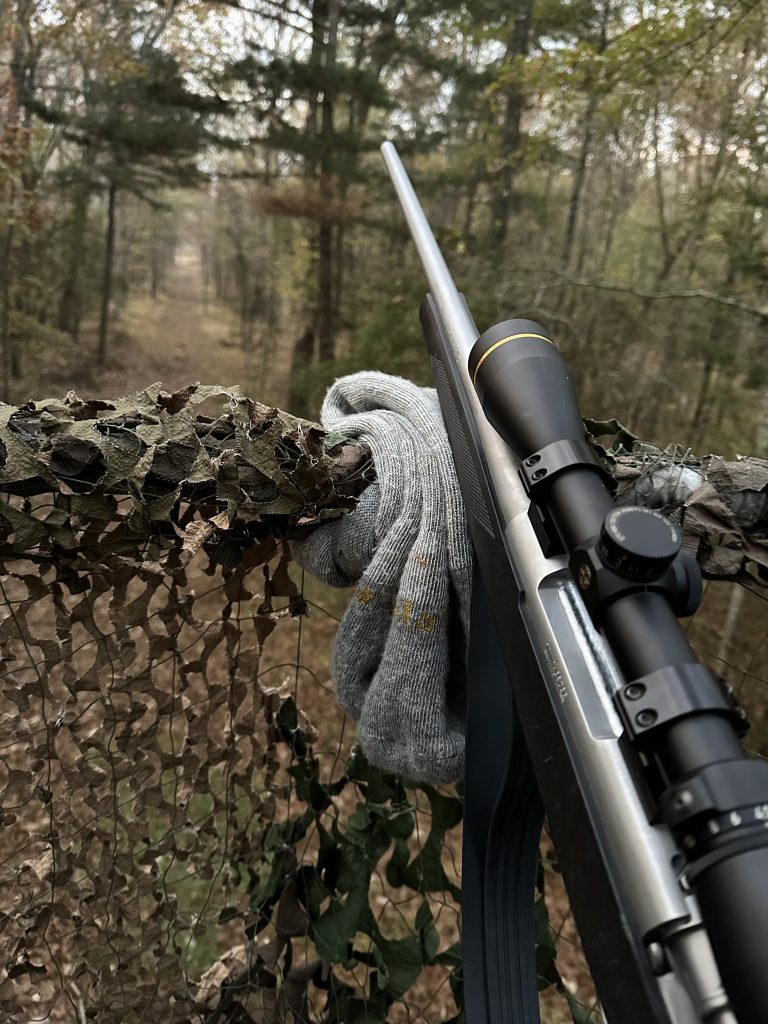The first published recipe for gunpowder appeared in about 1044. However, it took a few centuries before shooters could aim those early hand cannons with any degree of accuracy. That recipe slowly evolved into the smokeless powder used in modern cartridges today. Shot through precision-machined barrels, they can now deliver consistent hits at targets nearly invisible to the naked eye.
A quality rifle scope is the gateway into a world of precision shooting. These optical marvels have revolutionized how shooters engage a target by providing crisp images of distant quarry. Rifle scopes are more than just tools; they are a fusion of optics, engineering, and ballistic science. Understanding the fundamentals of rifle scopes, from their magnification power, reticle types, and the impact of different coatings on lenses, is essential for anyone looking to elevate their shooting game.
While early telescopic rifle sights emerged in the 1800s, the past century has seen remarkable advancements in scope technology, and design. Key innovations like parallax compensation, specialized reticles, increased magnification, and lenses with extra-low dispersion glass have driven the evolution of today’s high-performance scoped rifles. With ever-expanding capabilities to perform in challenging conditions and extremes of distance and light, the rifle scope has become an indispensable tool for many forms of precision shooting. Whether you’re a hunter seeking pinpoint accuracy, a competitive shooter aiming for tight groupings, or a homeowner with a varmint problem, grasping the intricacies of rifle scopes will enhance your shooting experience and bring you closer to hitting those elusive bullseyes with confidence and precision. Join me as I discuss a few things I’ve learned about choosing the best rifle scope since pulling the trigger on my first Red Ryder in 1955.
Key Considerations For Choosing A Rifle Scope
Matching a scope to any rifle involves evaluating a shooter’s abilities, goals, and budget before settling on a particular model. Below are a few factors to consider as you search for the perfect scope to mount atop your favorite rifle.
Magnification Range
Modern scopes are available in various magnification options, catering to multiple shooting disciplines and target distances. The correct magnification depends on user requirements. It’s crucial to balance magnification with image quality, field of view, and budget to make an informed decision. A few shooters prefer fixed vs. variable-powered scopes.

Fixed-Power Scopes
Fixed power scopes can provide an advantage to those looking to simplify their shooting style. Slug guns, rim fires, and those who shoot short to medium-range targets often choose a specific magnification for increased field of view and lighter weight. Fixed scopes excel at providing maximum optical clarity and durability at a given magnification; however, they lack the flexibility of adjustable models. Their simplicity makes them a cheaper option, and they often hold zero better than many variable-powered scopes.
Variable-Power Scopes
Low-power scopes (1-4x)- This option is ideal for close-range applications, such as hunting yard varmints and small game, where quick target acquisition and a wide field of view are crucial.
Medium-power scopes (3-9x)– These are a popular option for hunting and target shooting. It offers a balance of magnification, field of view, and clarity, making them suitable for distances ranging from close to medium range (up to 300 yards or so).

High-power scopes (6-24x)– This magnification is suitable for longer-range shooting, where precise targeting at extended distances is needed. They offer exceptional magnification and image quality but have a narrower field of view. These scopes require a higher skill level to compensate for wind deflection and bullet drop.
Tactical scopes (1-6x or 1-8x)– This category includes rugged models for tactical applications, such as law enforcement and military use. They typically combine larger tubes with low-power magnification for close quarters and higher magnification for medium-range engagements.
Objective Lens Diameter
The size of the objective lens determines its light-gathering capabilities. Larger lenses transmit more light, and hunters who rise early enough to watch that first ray of light settle on their green field prefer them. They benefit low-light shooting; however, larger lenses add weight, bulk, and expense to a scope.
Reticle Types
The positioning of a reticle within a scope will determine whether it’s better suited for hunting or long-range target shooting. Many different reticle types are available, each with advantages and disadvantages.
First Focal Plane (FFP) Reticle- A FFP reticle changes size with the scope’s magnification. The reticle markings are always the same size relative to the target, regardless of the level of magnification. Hash marks on a reticle maintain their value through all magnification levels and are the preferred choice by tactical and competitive shooters.

Second Focal Plane (SFP) Reticle– A SFP reticle does not change size with the scope’s magnification, and the reticle markings appear smaller at higher magnification levels. These are well-suited for hunters using low to medium-power magnification.
- Duplex Reticle- A popular choice for various shooting applications, including hunting, target shooting, and varmints. Thinner lines form the aim point at the center, which makes it easy to see the target, with thicker posts at the outside that allow for quickly centering the target.
- Mil-Dot Reticle- These are made with a series of dots along the horizontal and vertical reticles and are used to range targets and allow precise holdover adjustments for bullet drop and windage.
- BDC Reticle- This reticle has hash marks or dots designed explicitly for a particular bullet’s trajectory, simplifying holdover adjustments for bullet drop at different ranges.
- Illuminated Reticle- These have a light source that causes the reticles to glow. Most are battery-powered with a rheostat that controls intensity and is helpful in low-light conditions at dawn or dusk.
- MOA Reticle- Markings along the vertical and horizontal lines are equivalent to one inch at 100 yards, making windage and elevation adjustments simple when distance and bullet drop are known.
- Christmas Tree Reticle- A tree reticle has a series of increasingly fine hash marks from the reticle’s center to the outside, making holdover adjustments for bullet drop at different ranges possible. Its triangular shape gives rise to the “Christmas tree” name.
Turrets And Adjustments
Scopes have screws or dials that allow you to adjust the windage and elevation of the reticle. The precision and repeatability of the turret adjustments are essential for long-range shooting. They are used to adjust the crosshairs horizontally and vertically so that the aim point remains centered.

Better quality scopes have turrets that adjust to zero after sighting in and allow for elevation and windage while keeping the main aim point centered. Many long-distance shooters prefer turret adjustments to additional reticle marks for aiming.
Lens Coating And Optics Quality
Thin layers of material are applied to the surface of a scope’s lenses to enhance their optical properties. These coatings serve several essential functions:
- Anti-Reflective Coating- Reduces glare off the lens surfaces and maximizes light transmission, resulting in brighter, clearer images.
- Water Repellency- Prevents water droplets from sticking to lenses in wet or humid conditions.
- Scratch/Abrasion Resistance- This hard coating protects from scratches, dust, dirt, and fingerprints to preserve image quality and extend the life of a scope.
- Color Enhancement- Delivers more vivid colors for better contrast.
The number of coating layers significantly impacts their effectiveness. Single-layer coatings offer basic protection, while multiple layers provide superior light transmission and enhanced image quality. Higher-quality optics often utilize numerous coatings on the objective (front) and ocular (rear) lenses.
Durability And Waterproofing
Here are some tips for choosing a durable and waterproof rifle scope:
- Choose a larger tube size (30-34mm)
- Ensure its rated shockproof and fogproof.
- Look for an IPX7 rating for waterproofing.
- Stick with proven models by established manufacturers with extended warranties.
Some popular brands of durable and waterproof rifle scopes:
Choosing The Best Rifle Scopes For Different Shooting Purposes
Your target and shooting conditions will dictate your choices. Whether your aim is paper targets, squirrels, or Cape Buffalo, you need a scope that won’t disappoint you. Here are some general recommendations:
Reticles in the first focal plane grow or increase as the magnification increases. The reticle size may not be an issue on a hunting rifle but can be a problem on a target gun since it may cover more of the target. For hunting, a first focal plane is fine.
- Hunting- A magnification range of 3-9x or 4-12x will give you enough magnification for longer shots but is also versatile enough for close-range encounters.
- Precision Shooting- A scope with a magnification range of 10-50x is ideal. This magnification level allows for precise aim points at extreme distances.
- Tactical and Law Enforcement- A range of 1-4x or 1-6x is a good choice for tactical and law enforcement applications. These provide close-range engagements and allow you to refocus on targets at longer distances if needed.
- Recreational Shooting- A magnification range of 2x8x or 3-9x is a good choice for recreational shooting. Either option will give you enough magnification for plinking, target shooting, or thinning the varmint population.
Best Rifle Scope For Deer Hunting
Best is a subjective word, and the following recommendations are my personal choices. Your rifle caliber, skill level, and shooting environment will help determine your scope choice. If you’re an old swamp hunter, a lower power (1-6) with a large objective lens is a good choice. However, if expense and weight are not a factor, you can’t go wrong with this model:
Nightforce ATACR 4-16X42 MOAR F-1
- First Focal Plane
- Tough & Durable
- Great Turrets
- Exceptional Glass with illuminated reticle
Best Low-Light Rifle Scope
Nightforce Optics 5-25×56 ATACR Riflescope
- F1 DigIllum Illuminated
- First Focal Plane MOAR reticle
- 89 MOA elevation adjustments- 60 MOA windage adjustments
- High-quality ED glass provides clear visuals beyond 1000 yards.
Best Budget Rifle Scope
- 1/4 MOA Finger Click
- Scratch Resistant Lenses
- Waterproof, Fogproof, Shockproof
- Second Focal Plane, 1-inch main tube
- Lifetime Warranty
FAQs About Rifle Scopes
How to sight in a rifle scope?
Pro shops can mount and bore-sight a rifle, but the owner must still fine-tune a scope’s zero. The following steps will guide you through this simple process:
- Secure your rifle in a solid shooting rest.
- For bolt actions, remove the bolt and visually align the barrel with a 50-yard target. Use adjustments to position the crosshair on target.
- Install the bolt and fire one round.
- Adjust crosshairs onto the impact hole.
- Allow the barrel to cool, and fire another round at the target center.
- For semi-auto’s, first bore sight and then proceed to step three.
Which rifle scopes are made in the USA?
Most of the scopes made by these companies qualify:
- Leupold & Stevens
- Nightforce
- Trijicon
- U.S. Optics
How to mount a scope on a rifle?
Purchase mounts specific to your rifle brand and action style. Determine ring height (low, medium, or high) based on the objective diameter of your scope, barrel profile, and action. Scope positioning should be as close to the barrel as possible.

- Match your ring diameter with the scope’s tube diameter.
- Secure rings to the base according to tube length. Use Blue Loctite and torque to the manufacturer’s specs.
- Position the scope tube and loosely install each cap screw with a small drop of Blue Loctite.
- Adjust the lens for the best eye relief.
- Use a level across the bottom scope flat to align the vertical crosshair.
- Torque screws per product manual.
- Allow 24 hours for thread sealer to cure before firing.
Final Thoughts On Rifle Scopes
Choosing the best rifle scope is easy once you determine your shooting goals and budget. It is crucial to take your time and select a model that will perform at the distances you intend to shoot. Matching a scope and reticle to your specific bullet ballistics will allow you to adjust for distance and wind speed with a simple turret twist.







